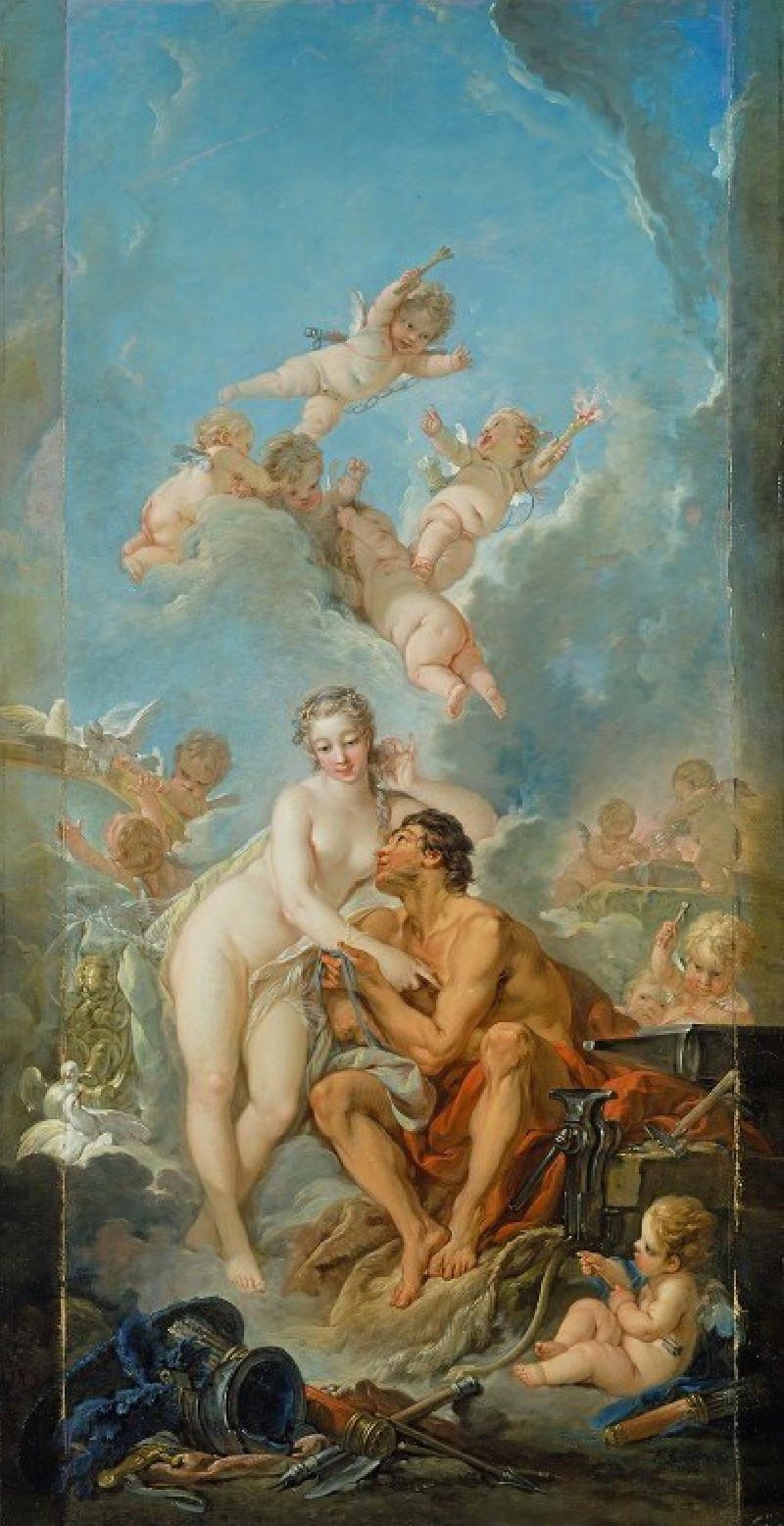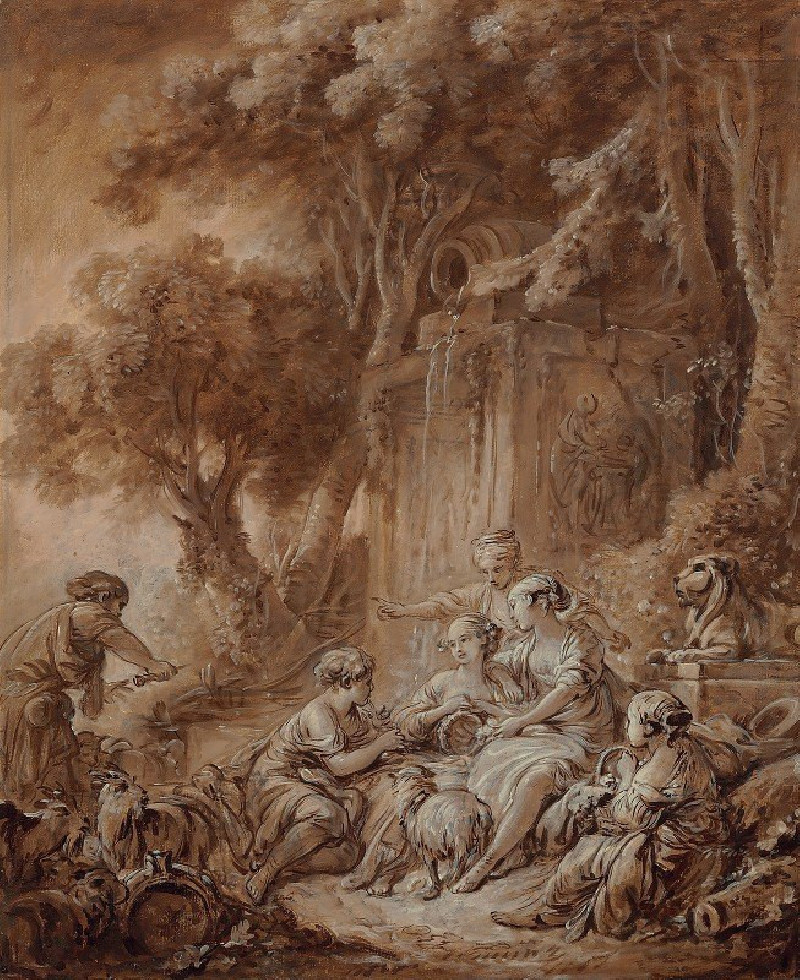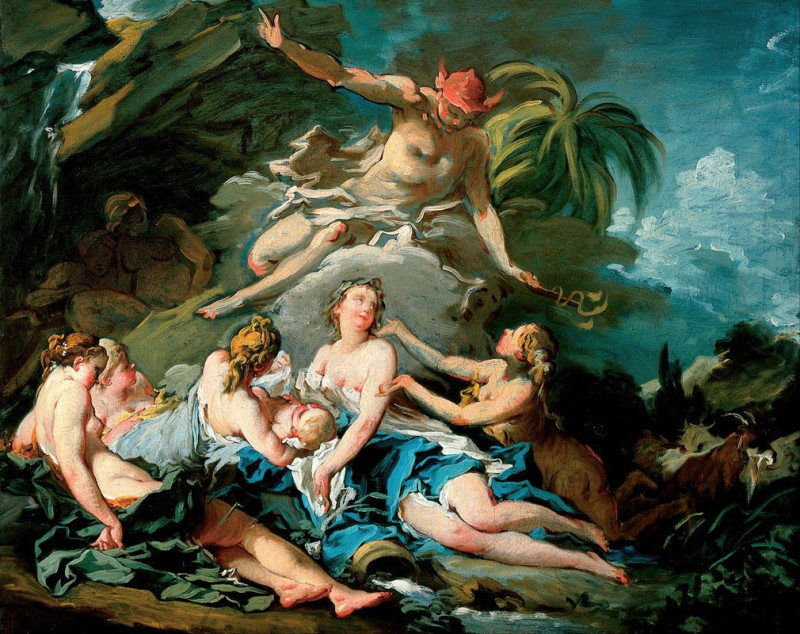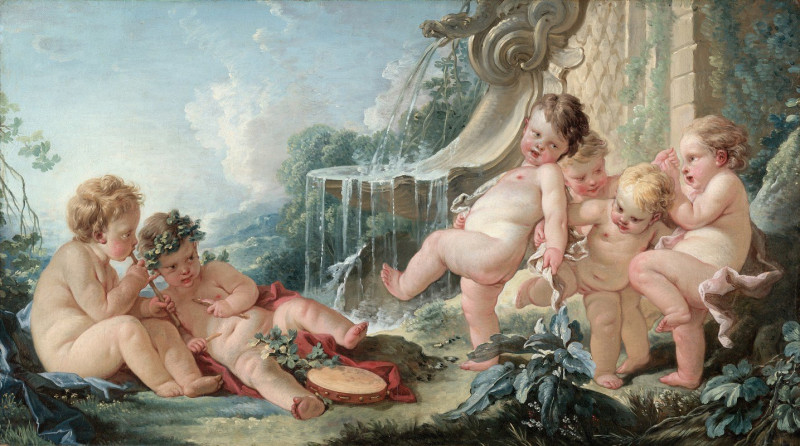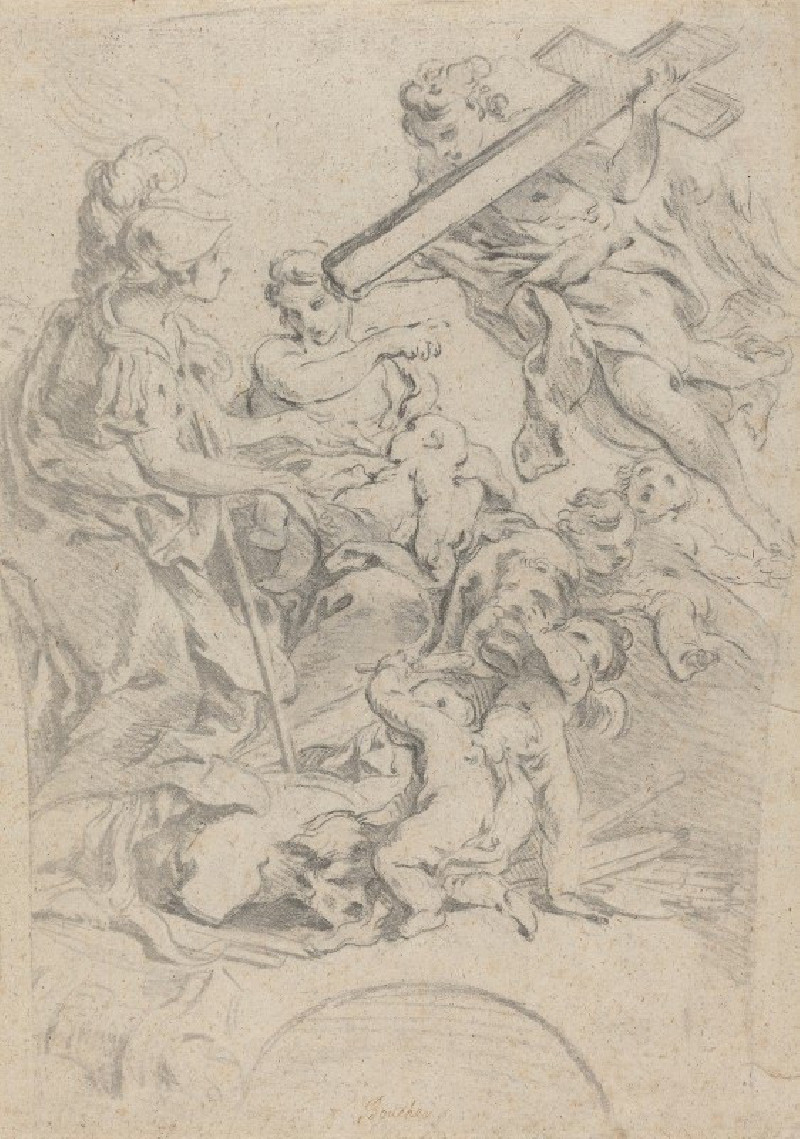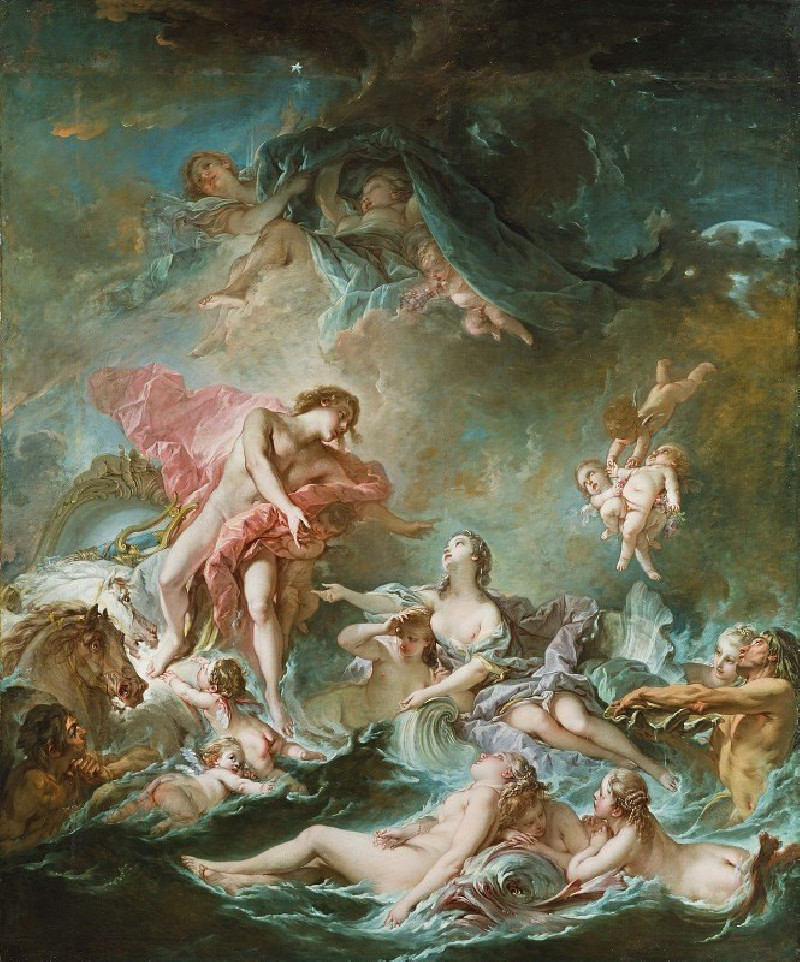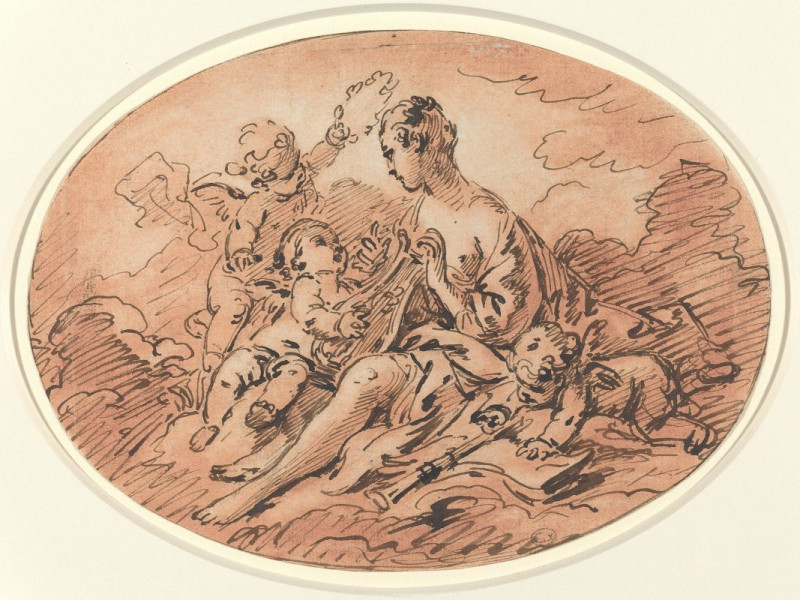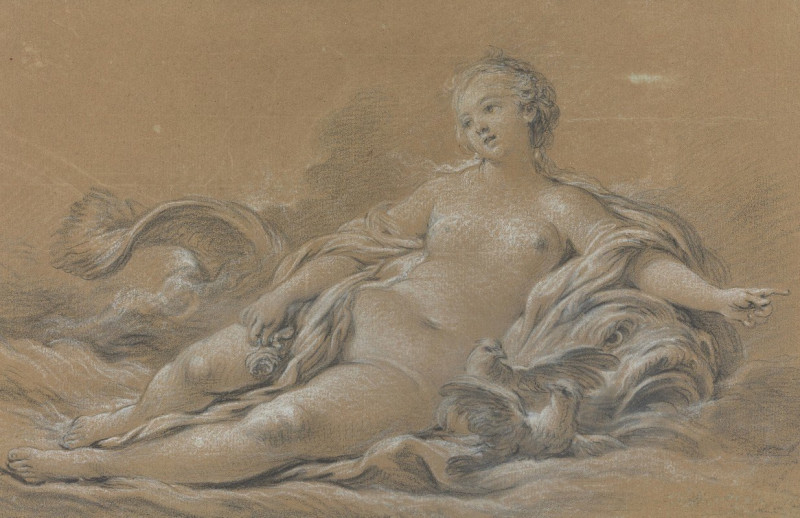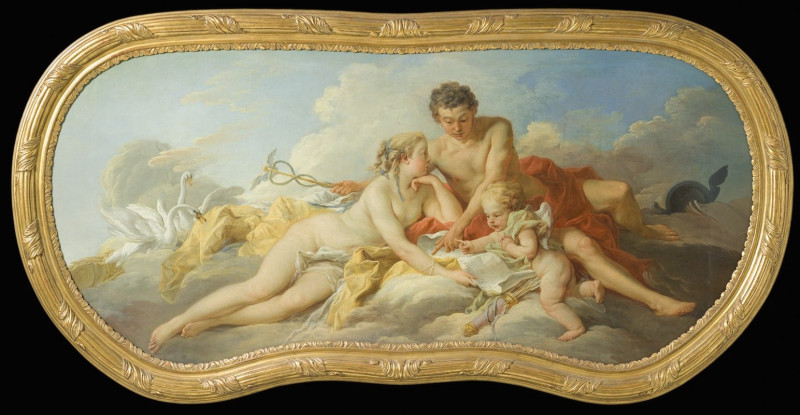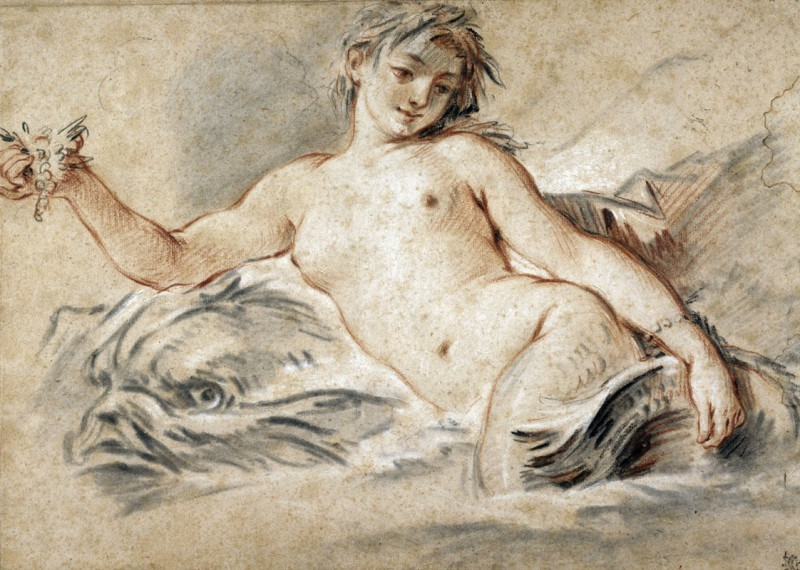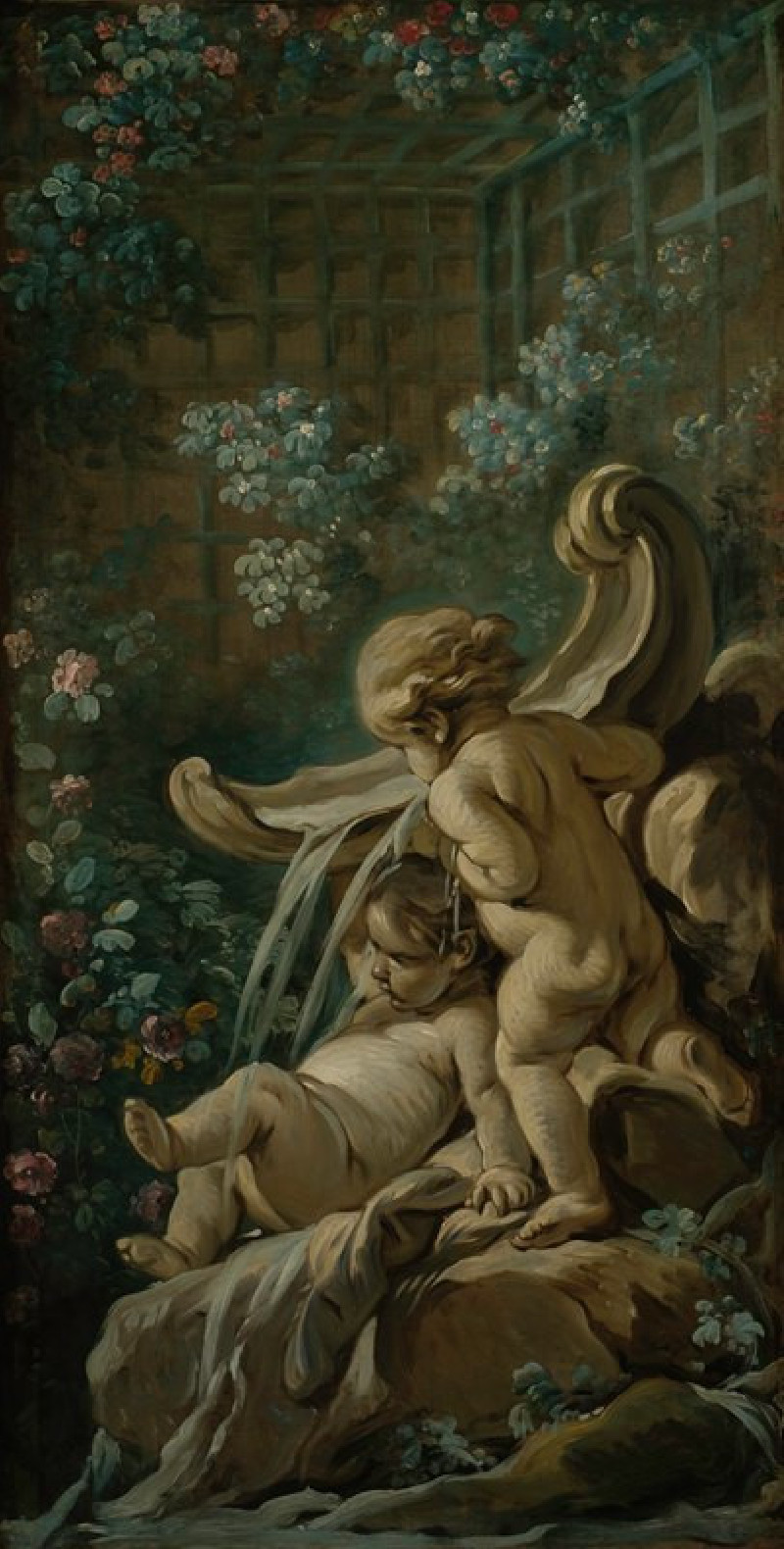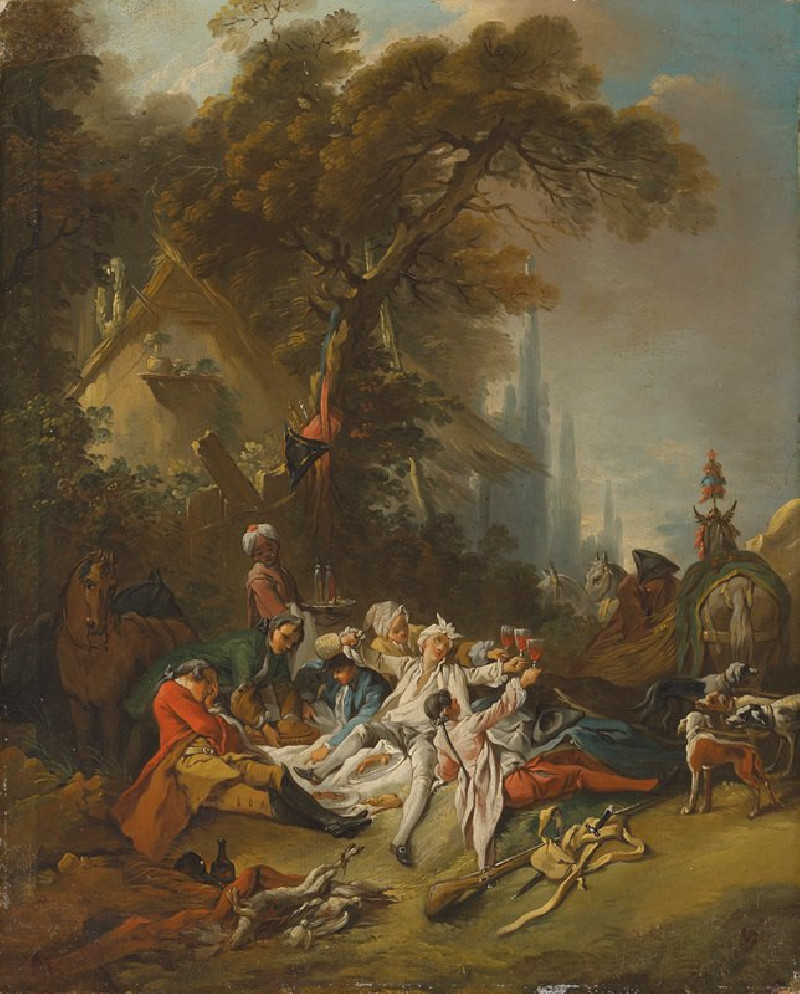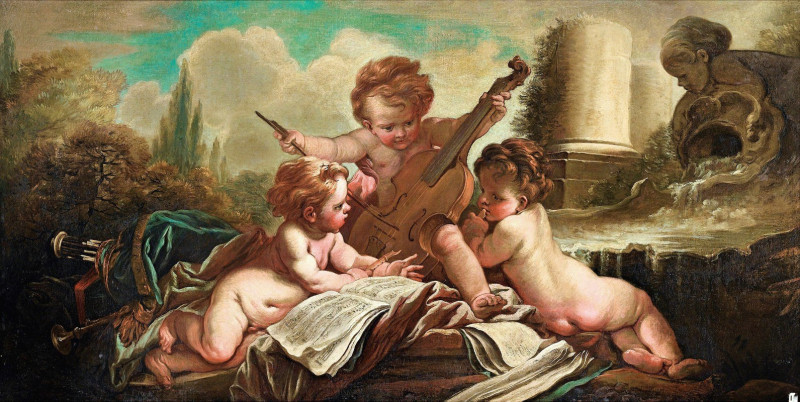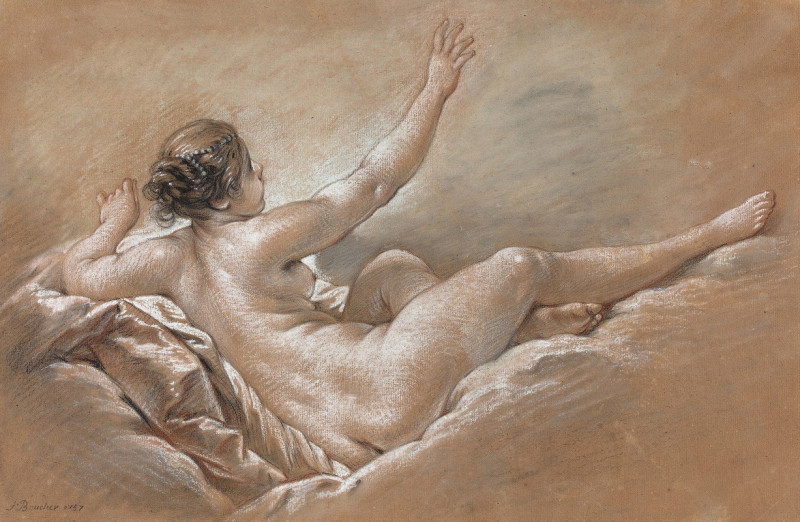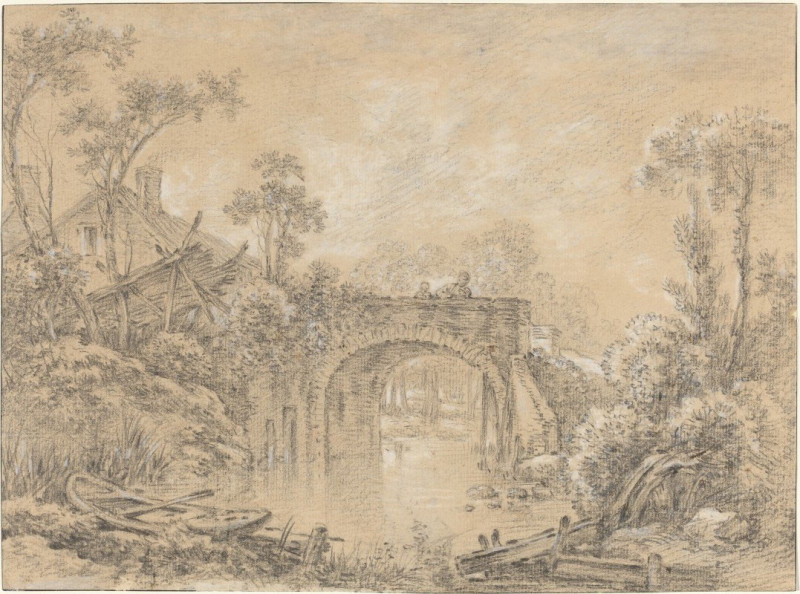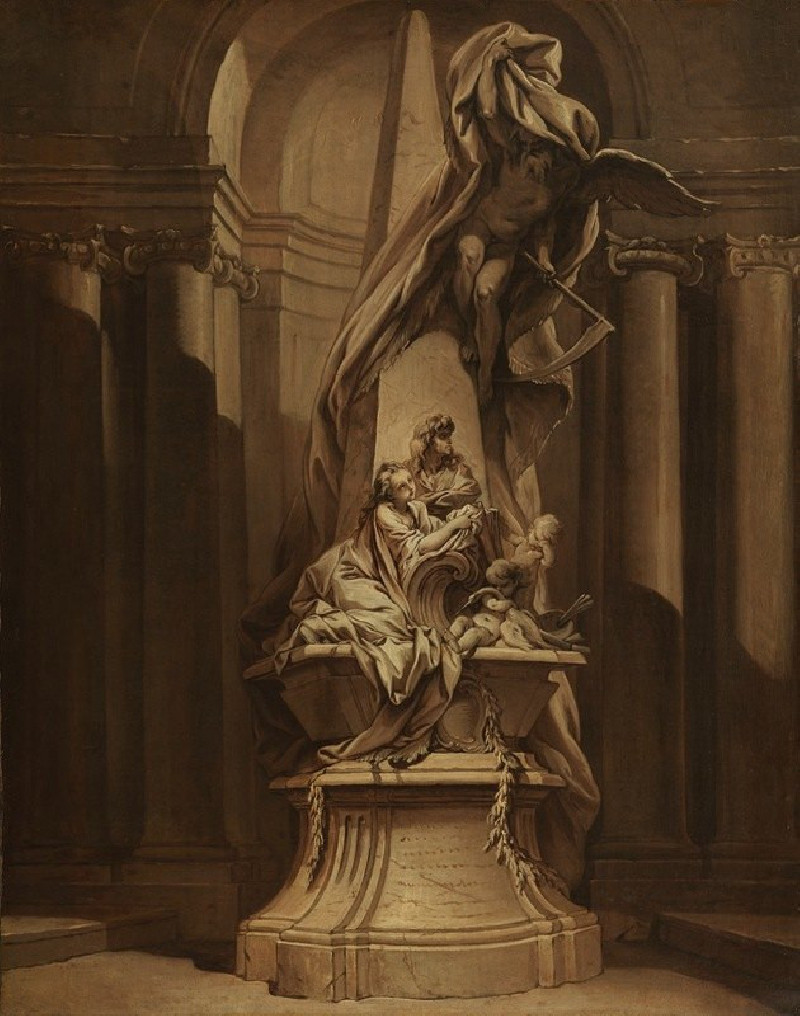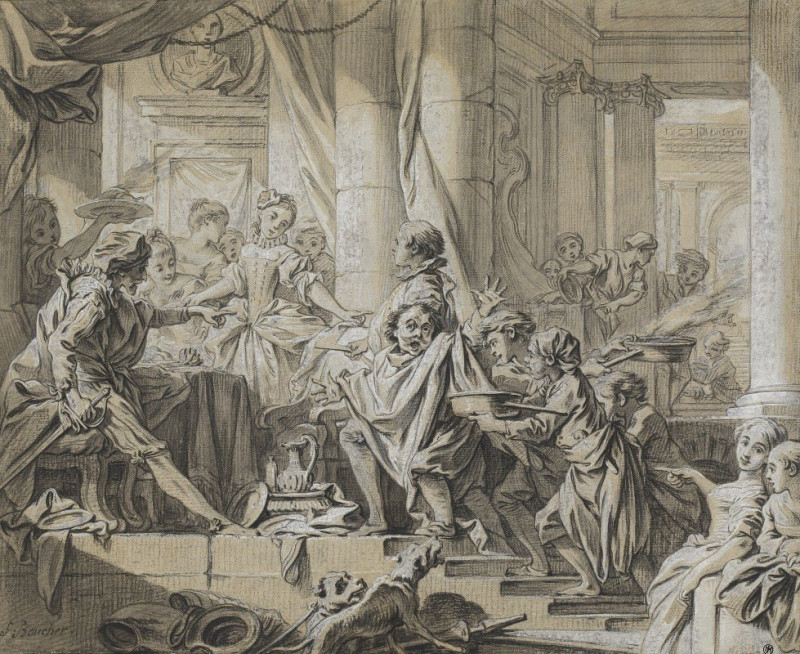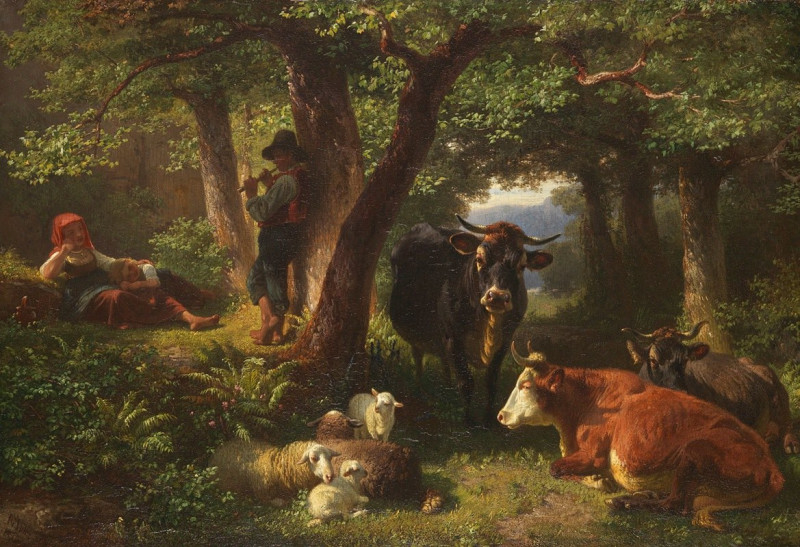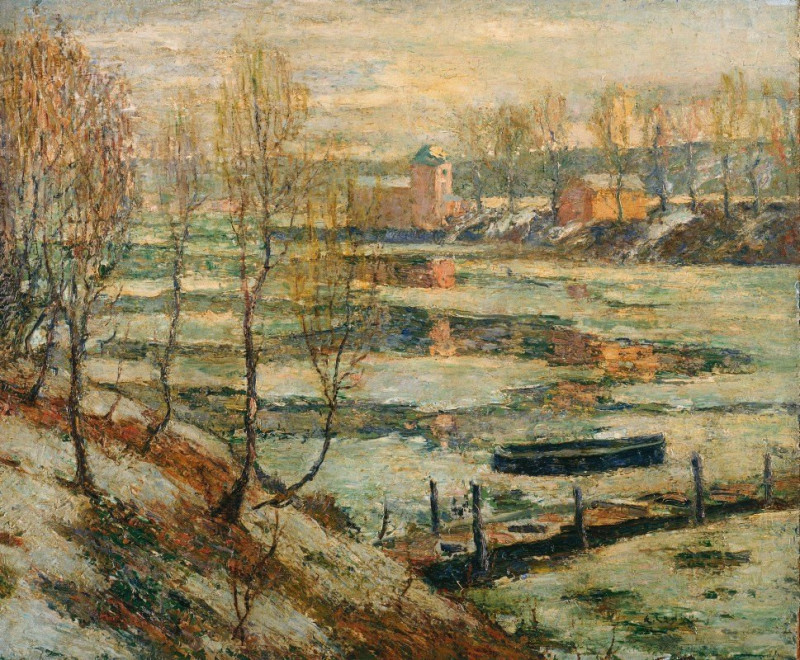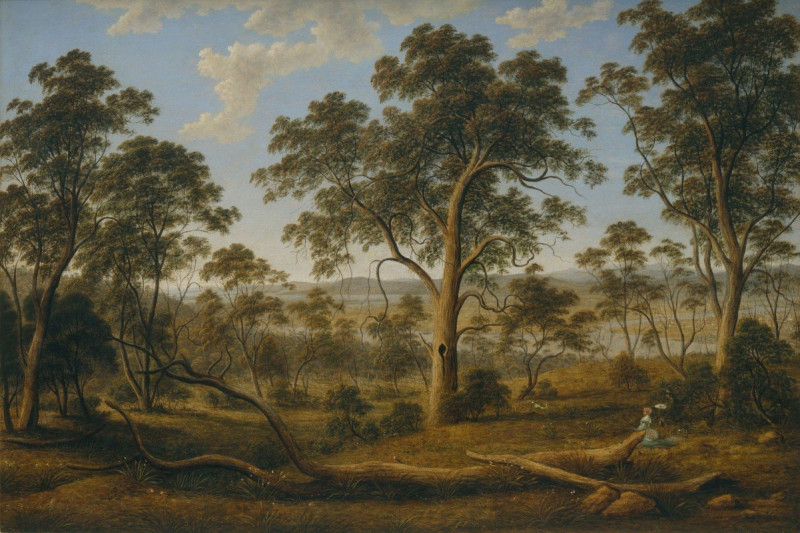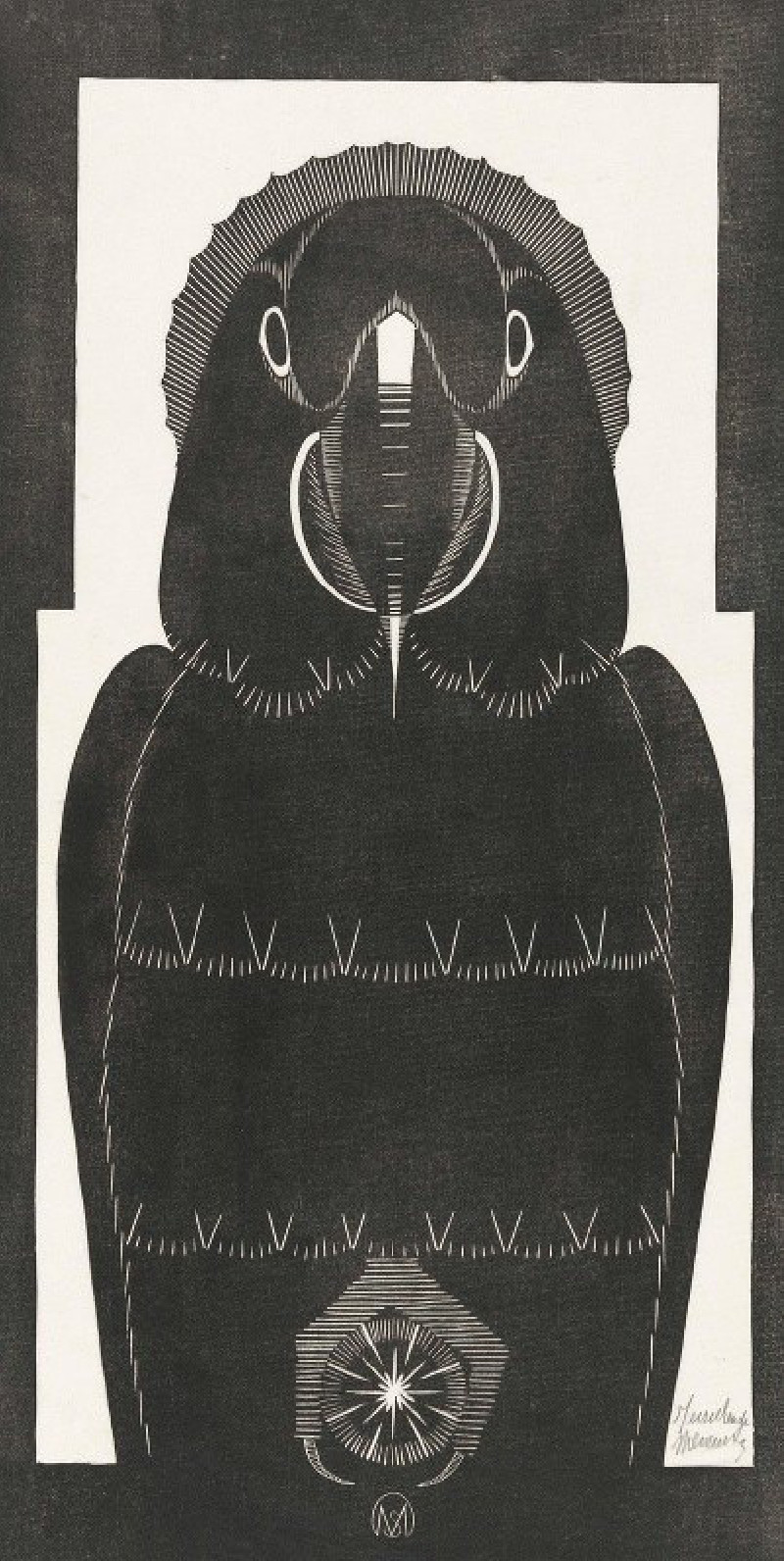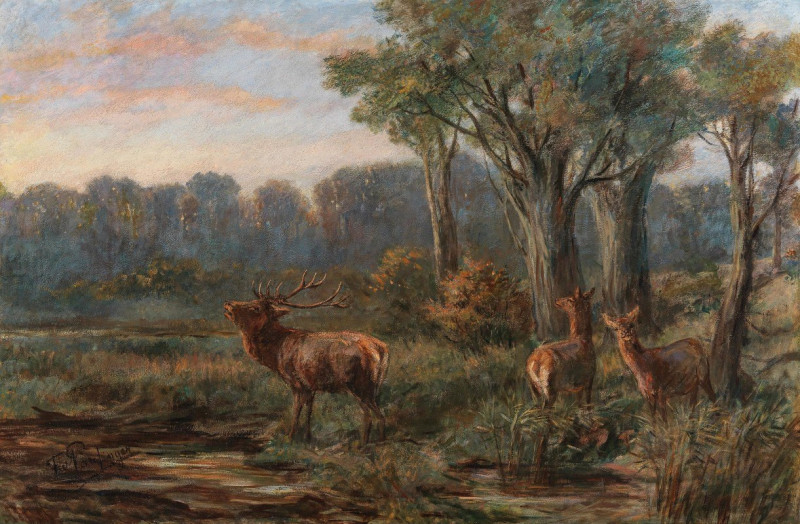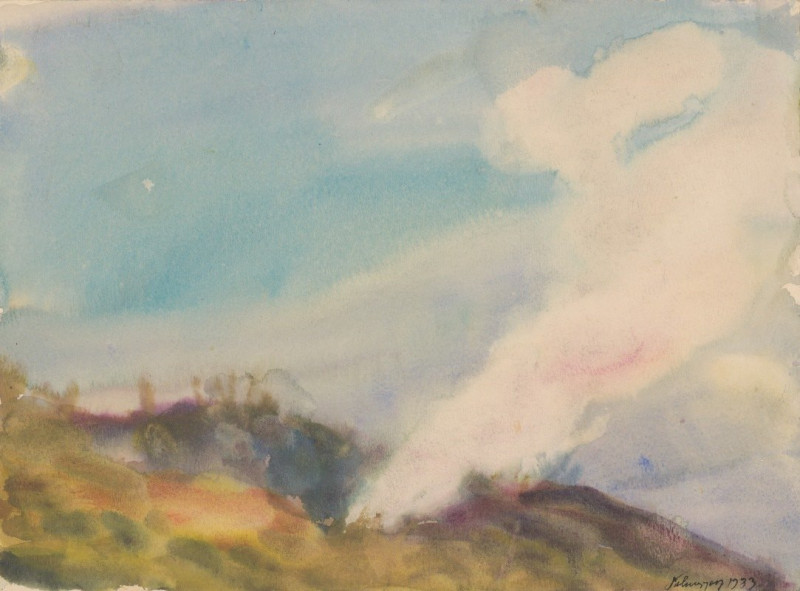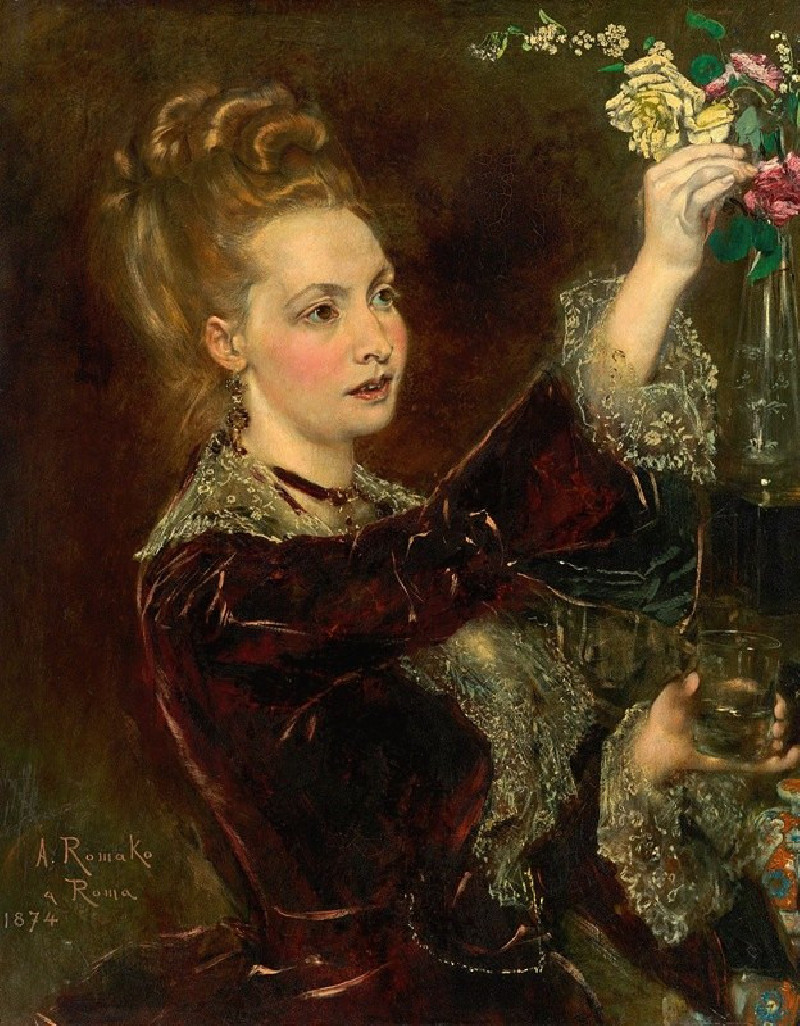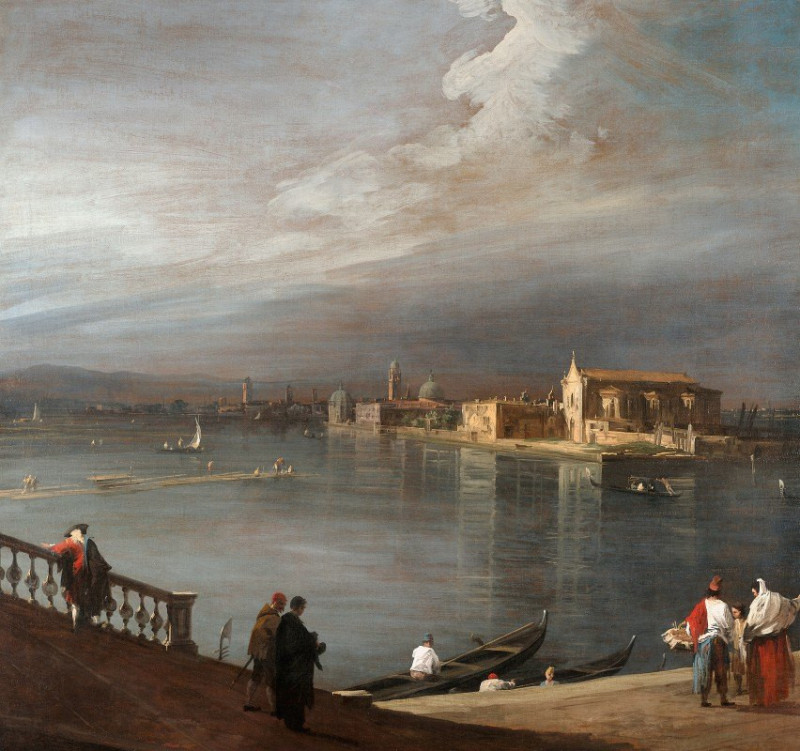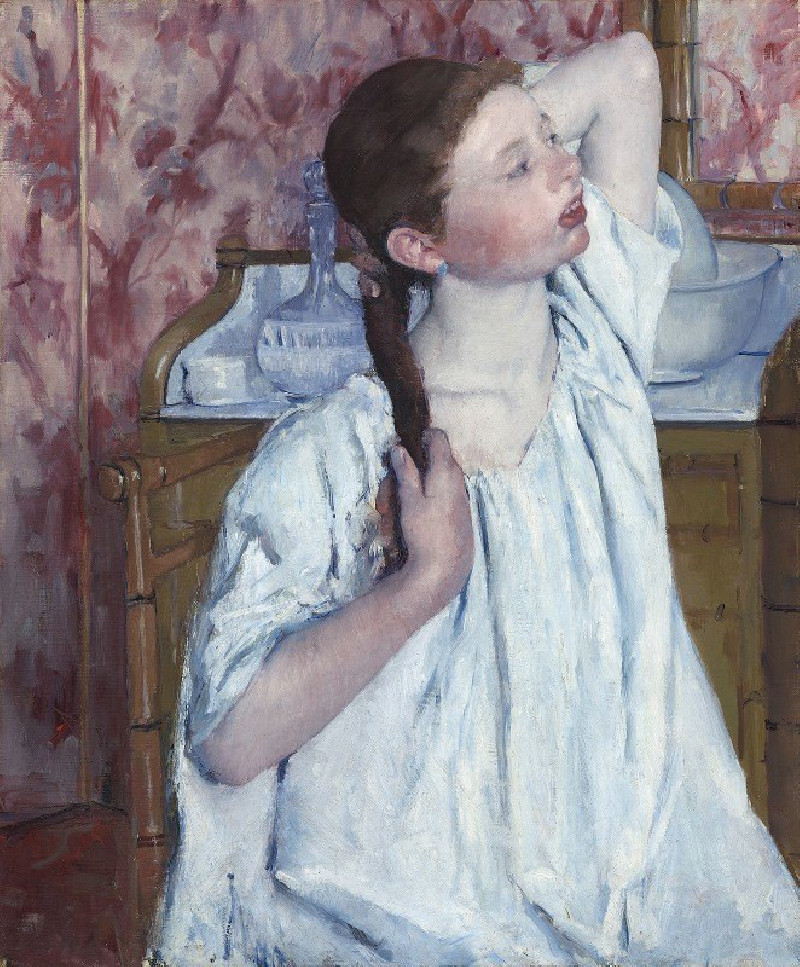Venus and Vulcan (1754)
Technique: Giclée quality print
Recommended by our customers
More about this artwork
François Boucher, a master of Rococo art, brings to life a sensual and vibrant depiction of Roman deities in his painting "Venus and Vulcan." Painted in 1754, this artwork is filled with the soft pastels and dynamic composition typical of Boucher's style.In the foreground, Vulcan, the god of fire and metalworking, is depicted as a muscular figure, intent and earnest in his gaze towards Venus. The goddess of love, Venus, stands gracefully before him, embodying both beauty and elegance. She is portrayed with a lightness and airiness that contrasts starkly with Vulcan's earthy, robust form. Their intimate proximity and Vulcan's tender manner in handling Venus' delicate arm suggest a moment of romantic persuasion, possibly Venus seeking to charm Vulcan into crafting weapons or jewels.The scene is enlivened by a group of playful cherubs above them, frolicking amongst clouds in a clear blue sky. These cherubs add a whimsical, joyful element to the painting, embodying the lightheartedness and frivolity often associated with Boucher's works.Below, the details are just as telling, with scattered tools and a helmet, hinting at Vulcan's trade and the disruptive power of love over daily duties. A cherub at the lower right plays unbothered, further emphasizing the whimsy and carefree atmosphere.
Delivery
Returns
François Boucher (1703–1770) was a French painter, engraver, illustrator and printmaker. He was a proponent of Rococo and had a huge influence in spreading the style throughout Europe. His art was idyllic and voluptuous with a high-toned palette of blues and pinks. He created designs for all decorative arts, porcelains and tapestries. Boucher also painted several portraits including his patroness Madame de Pompadour. He is one of the most celebrated decorative artists of the 18th century.

